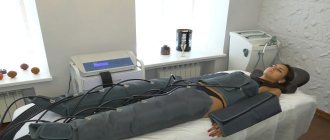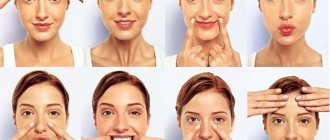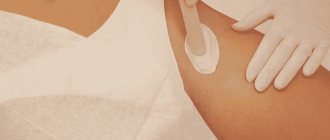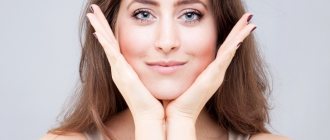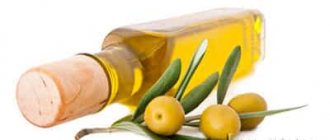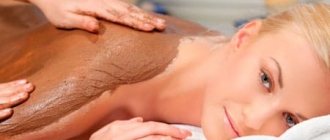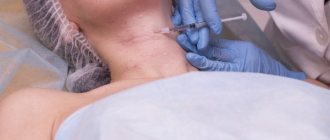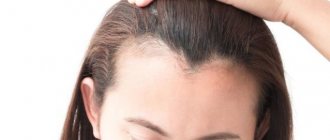Bow legs - First steps.
The little one has gone! How many joyful emotions and pleasant excitement this feat brings to the smallest hero and his happy parents! The first steps will be hesitant, timid, and cautious; the baby can spread his legs wide, using this little trick to maintain the balance of his body. That is why in the first 2-3 months a slight O-shaped curvature is considered normal. If parents regularly show their child to an orthopedist and follow the recommendations for baby nutrition, then gradually the baby pedestrian will learn to stand firmly on the ground and his legs will acquire even shape. But sometimes development follows a completely different scenario: the curvature of the legs increases even more or the baby begins to waddle like a duckling. This is a clear deviation. Therapeutic exercise, proper nutrition, and reducing stress will help your child overcome imperfections. First, let's figure out what is the reason for the curvature of the baby's legs.
Leg exercises (correction of O-shaped curvature)
1. Stand up straight, connect your heels, and from this position rise and fall on your toes 50 times. Then spread your heels and repeat the exercise another 50 times. Place your feet parallel and do another 50 times. Repeat the entire series morning and evening.
2. Place your feet shoulder-width apart with your toes facing out. In this position, carefully and slowly rise on your toes, then slowly lower. Repeat the exercise 25-30 times.
3. Get on your knees, spread your toes and sit on your heels or on the floor between them.
4. Standing, place your feet shoulder-width apart and squat, bringing your knees together.
5. Sit down, stretch your legs and quickly, sharply turn your feet with your toes outward, tensing your leg muscles.
Bowed legs - Haste of parents.
Each motor skill corresponds to a certain time: for example, a baby holds his head at 1.5 months, learns to crawl from 7 months, and attempts to walk at 9-11 months. Sometimes impatient parents do not wait until the baby begins to stand up independently with the help of support, but try to put their child on his feet as soon as possible, not suspecting that the fragile musculoskeletal system may simply not withstand the colossal load. HOW TO AVOID: Remember that each stage of development has its time. If a baby crawls well, this does not mean that he needs to be taught to walk right away. When moving on all fours, the muscles of the spine and legs are strengthened (the muscular system is responsible for the proper formation of bones) and coordination of movements is improved - all these are necessary conditions for taking the first steps. And you still have time to walk in the yard hand in hand with your little one!
Curvature of the legs - Rickets.
Rickets - the second formidable enemy of beautiful legs - appears when there is a lack of vitamin D in the body, which is necessary for the proper absorption of the main “builders” of the skeletal system - phosphorus and calcium. With a deficiency of vitamin D, these valuable microelements are washed out of the bones, leading to their deformation and softening. The first symptoms of rickets are increased sweating, baldness of the back of the head, a strong smell of urine and timidity. HOW TO AVOID: If a nursing woman’s diet contains cheese, butter, and fish, then the baby receives important vitamin D through mother’s milk. For older children, doctors prescribe fish oil or vitamins in special drops. Walking in sunny weather is also beneficial for children of any age, since ultraviolet rays are a natural means of preventing and combating rickets.
Bowed legs - Hip dysplasia.
Congenital dislocation of the hip (dysplasia) can lead to incorrect position of the legs when walking. Dysplasia develops in the fetus in the last months of intrauterine life under the influence of various negative factors: vitamin deficiency, hormonal disorders, previous infections and alcohol consumption by a pregnant woman. Only an orthopedist can identify the disease, so when the baby is one month old, do not be lazy to make an appointment with a doctor and undergo an ultrasound examination of the hip joints. HOW TO AVOID: The expectant mother should be attentive to her health: dress according to the weather, give up bad habits, get more rest and carefully protect herself from all kinds of stress.
Bowed legs - Excess weight.
Children of normal weight encounter the problem of bowed legs much less often than their obese peers. The fuller the baby, the more pressure is placed on its lower limbs. A simple body mass index formula will help you calculate the optimal weight of a child: divide the toddler’s weight (in kilograms) by his height (in meters squared). If the result is a figure from 14 to 16, the child’s weight is normal, less than 14 means underweight, and more than 16 means overweight. HOW TO AVOID: Monitor your child’s diet. If a baby should be fed according to his/her requirements, then a pediatrician will help a baby who is bottle-fed to calculate the required daily volume of formula. And be sure to let your child move. Shifting toys, pulling up legs, turning over from the back to the stomach - the best and simplest training of various muscle groups and ideal fitness for the baby.
Curvature of the legs - Birth trauma.
Going through the birth path is always an easy path for the baby. Unfortunately, there are cases when, at the moment of birth, the baby damages nerves, muscles or ligaments, which can subsequently increase the risk of deformation of the limbs. HOW TO ESCAPE: Of course, childbirth in most cases depends on the professionalism of doctors, their efficiency and the coherence of the work of the maternity hospital team, but this does not mean that the woman giving birth is a passive participant in these actions. During pregnancy, you should attend special courses to prepare for childbirth physically and psychologically, and to know what to do in emergency situations.
Universal complex
Place some gym mats on the floor and get started.
Exercise 1. Swing your arms
- Lie on your back, place a roll of a rolled towel 2-5 cm thick under your shoulder blades (the thickness of the roll depends on your age and height).
- Pick up dumbbells (plastic water bottles): women and teenage children - weighing 0.3 kg, men - up to 2 kg. Extend your arms along your body.
- Swing with straight and slightly tense arms, raising them up and down. The range of movements is maximum.
It is recommended to do 200-300 movements 2 times a day.
When performed regularly, this exercise is very beneficial for the thoracic spine.
Children can do this exercise in its entirety right away, but adults should be careful to gradually increase the load to avoid damaging the shoulder joints.
For arthrosis and arthritis of these joints, the exercise is not recommended.
Exercise 2. Spinal stretch
- Stand up, lower your arms and clasp your hands behind your back.
- Tighten your arms as much as possible, bringing your elbows close together.
- Move your shoulders and head back, arms back and down.
- The chest should bend forward.
- Try to bring your elbows and shoulder blades together, pull your head towards your back. (Do not stand on your toes, do not stick out your stomach.)
- Hold the pose for 1 second.
- Then relax as much as possible, unclasp your arms and pull your stomach in slightly.
- Direct your gaze slightly upward.
- Do not straighten your shoulders and do not take a deep breath - movements should only be made using the abdominal muscles.
The exercise takes no more than 2 seconds and is performed 2 times per hour; during school hours - 2 times every break.
Exercise 3. Snake
- Lie on your stomach. Place your arms bent at the elbows, palms down, near your chest.
- Raise your head and upper chest very slowly, using only your back muscles at first, then gradually straightening your arms.
- Having risen up as much as possible, slowly turn your head first to one side, then to the other.
- Try to look at your heels.
Perform the exercise in the morning and evening 3 times.
Exercise 4: Lower back stretch
- Get on your knees and from this position sit on your heels. Pull your stomach slightly and move forward.
- Then try to lie on your back so that your heels remain under your buttocks.
- Hold this position for a few minutes until pain appears.
Repeat 2-3 times a day.
The exercise is very effective for treating lumbar kyphosis, but is dangerous for advanced arthrosis of the knee joints.
Exercise 5. Relaxation
- Lie on your back, placing a thick cushion 10-15 cm thick under your lower back.
- It is advisable to remain in this position for up to 40 minutes a day, and in severe cases, more. Some mothers place a cushion on their baby when he goes to bed.
Exercise 6. Boat
- Lie on your stomach. Stretch your arms forward.
- Then lift them up as much as possible, simultaneously lifting your head and legs.
- Repeat several times.
The exercise strengthens the back muscles well and is practically safe in terms of displacements and injuries of the intervertebral discs.
Bowed legs - Wearing the wrong shoes.
As soon as the baby begins to stand on his own feet more than five times a day, it’s time to look at the shoe store and buy the first shoes in his life. Czech shoes, felt boots, flip-flops and other soft shoes are not suitable for babies because they create an incorrect position for the legs when walking. Shoes with too hard soles, which make it difficult to bend the foot, are also harmful. HOW TO AVOID: Buy women's orthopedic shoes with a high back and a small (0.5-1 cm) wide heel. Don’t be afraid to let your baby run barefoot on the grass, sand, or carpet—there are many biologically active points on the foot, the stimulation of which affects the proper formation of the body’s systems, including the musculoskeletal one.
Skinny legs: how to get better
I would like to immediately note that the recommendations listed below from hudeem-bez-problem.ru are very effective.
So, you are seriously thinking about what to do to make your legs get better and get the desired shape. To achieve this goal, you need to diversify your life with physical activity.
It can be:
- Exercises in the gym. Under the guidance of an experienced trainer, it is enough to simply develop a set of exercises in accordance with the desired result. In addition, a lot depends on how well, regularly and correctly the exercises are performed, and here you cannot do without the close gaze of the “mentor”.
- Certain sports are also an excellent way to strengthen and build muscles in your legs. You can choose an activity that will not only make your legs more beautiful, but also have a great time without going to the gym (regardless of the reason). This is also an excellent solution to the question when the task is how to gain weight in the legs of a teenager who does not welcome grueling indoor training. You can “build up” your legs well by running, dancing, cycling, skating, rollerblading, skiing (including stationary exercise machines: exercise bike, treadmill, orbitrack), swimming, jumping rope and much more.
- Among other things, you can practice on your own and at home.
Bowed legs - Heredity.
Curvature of the legs may be genetic. If there were patients in your family with calcium-phosphorus metabolism disorders or limb deformities, then there is a high probability that this problem will be passed on to your baby. HOW TO AVOID: If there is a threat of a hereditary disease, you should promptly consult a doctor who will conduct an examination and give the necessary recommendations for treatment. HOW TO CORRECT AN EXISTING DEFECT Treating leg deformities is not an easy task, requiring time, perseverance and patience on the part of parents and children. The timing of contacting a specialist also plays a big role in the issue of recovery - the sooner you sound the alarm, the better.
- First of all, it is important to identify the exact cause of bowed legs. Only an orthopedic doctor can do this through examinations, observations and conversations with parents. If his recommendations are strictly followed (for rickets, the doctor will prescribe medications containing vitamin D, for dysplasia, he will prescribe a splint, and an overly plump baby will be sent for consultation with a nutritionist), you can achieve truly impressive results.
- To correct leg defects, courses of therapeutic massage of the back, lumbar, gluteal regions and lower extremities should be carried out four times a year. The massage should be performed by a specialist who can select the appropriate set of exercises and will clearly control the load on the muscles.
- A toddler with an X-shaped curvature is recommended to walk barefoot on pebbles, sand and other uneven surfaces; a baby with an O-shaped curvature will especially benefit from walking on a smooth surface (parquet, linoleum).
- Teach your child to ride on his mother's lap, swim like a frog, placing his hands on an inflatable ring, make circular movements with his legs in the air, reminiscent of riding a bicycle, sitting in a cross-legged position (Turkish style). These therapeutic exercises, which your baby will surely perceive as a fun game, will speed up the process of straightening his legs.
- Buy your child orthopedic shoes with an individual orthopedic insole, since any deformation of the feet leads to incorrect placement of the feet.
§1. How to correct crooked legs depending on the complexity of the situation
The problem of crooked legs is widespread among both women and men. This deficiency gives rise to various complexes in a person when in society, and can also lead to various diseases of the musculoskeletal system.
That is why this pathology must be corrected in the initial stages, since there is a significant chance not only to give the legs an ideal shape, but also to avoid the appearance of concomitant diseases.
Types of deformations
True
True curvature is a change or deformation of the bones of the thigh and lower leg. Most often, the tibia is deformed, i.e., the lower part of the leg becomes bent.
It occurs as a result of diseases of the musculoskeletal system suffered at an early age or is a consequence of metabolic disorders. Also, this type of curvature can be hereditary.
Varus
There are two forms of true curvature - varus and valgus. With varus curvature, the shape of the legs resembles the letter “O”, so it is often called “O” - shaped.
In this case the knees do not touch. People with this pathology are often said to have wheel legs.
Problems solved with the help of lymphatic drainage body massage and features of its implementation.
Read here reviews about honey massage for cellulite at home.
At this address we will tell you how to get rid of cellulite on your legs and butt.
Valgus
Unlike the previous type, in this case the legs are tightly closed at the knees, but the ankles are far apart.
The shape of the limbs with this type of pathology is shaped like the letter “X”. Valgus curvature is much less common than varus, but both of these defects are clearly visible when walking.
False
With false curvature, the skeleton of the limbs is not changed. The curvature is caused by improper distribution of the soft tissues of the legs.
It is this variety that causes only aesthetic inconvenience and does not threaten the development of any concomitant diseases.
Gymnastics
Exercises against varus form
Therapy for this disease can be carried out in various ways, and physical exercise plays an important role.
With the help of specially designed gymnastics, you can normalize blood circulation in soft tissues and strengthen the leg muscles. Long-term regular training helps reduce curvature.
The most effective exercises:
- Lie on your back, stretch your legs. Raise them slightly above the floor and do the scissors exercise, then repeat it, raising your legs perpendicular to the floor.
- Squat down with your knees together and your back straight. To be more effective, squat exercises should be as deep as possible.
- Get on your knees, spread your feet to the sides, put your hands on your waist. Squat down, trying to touch your buttocks to the floor.
- Walk on the inside of your feet for a few minutes.
- Place your feet shoulder-width apart, bring your knees in and out with the greatest possible amplitude. The feet should not leave the floor.
- Exercises on a special simulator on which you need to forcefully bring and spread your legs are effective. If you don't have it, you can use the following method. Put on your socks, stand on the floor and bring your legs together and spread them, sliding your feet.
- Stand near a support that you can hold onto with your hands, and swing your legs to the sides. This exercise can be repeated lying down.
- Sit on a chair, raise your legs straight in front of you, holding the back of the chair with your hands if necessary. To complicate the exercise, you can hold a small weight with your feet.
Important! All exercises must be started with a small number of repetitions; over time, the duration of exercises must be gradually increased.
Exercises against hallux valgus
All exercises necessary for the treatment of the disease must be performed regularly.
Exercises for the “X”-shaped curvature:
- Sitting cross-legged, press your knees as close to the floor as possible, helping yourself with your hands.
- Sit on the floor with your feet together in front of you. Press on your knees with your hands, trying to press them as close to the floor as possible.
- Lie on your back with your feet together. Lie in this position for several minutes. Gradually, the exercise time can be increased to a quarter of an hour.
- Do the same as described in the third exercise, lying on your stomach.
- Walk on the outside of your feet for a few minutes a day.
- Spread your legs shoulder-width apart, placing your feet parallel to each other, and squat. Make sure that your knees do not protrude forward over your feet or move apart.
- Squat on your knees, sitting on the floor between them.
- Walk on your toes without bending your knees. Steps need to be taken small.
- Sit on the floor and stretch your legs in front of you. Rotate your feet alternately inward and outward, trying to rotate them as much as possible.
Exercises to correct curvature of the legs are presented in the video.
Correction methods
Orthopedic surgery with the Ilizarov apparatus
In some cases, pathology can be corrected only by surgery. The Ilizarov apparatus is most often used for this.
With the help of the design, not only the correction of deformities is achieved, but also the lengthening of the limbs.
Stages of straightening:
- Holes are drilled at the bottom and top of the leg into which the knitting needles are inserted.
- All installed knitting needles are fixed using special rings of the device.
- Using special surgical instruments, the bone is broken, after which sutures are applied.
- A week after the operation, the technology for straightening the leg is determined using a computer, and the position and shape of the bone is changed using the installed apparatus.
- The duration of therapy is about four months, during which the device is on the leg all the time. In this case, the patient can walk without assistance, but the installed needles cause discomfort and injure the skin.
- After completing the course, an x-ray of the leg is taken, which can be used to determine the sufficient density of the bone scar.
- The device is surgically removed and a special fixator is installed in its place.
For the first time after surgery, the patient moves with the help of crutches, as it is necessary to reduce the load on the leg.
During the rehabilitation process, it is necessary to perform exercises that speed up the recovery process.
Cruroplasty
Cruroplasty is a surgical operation that is less complicated than surgery using the Ilizarov apparatus.
It involves correcting the shape of the lower leg by changing the shape of the leg muscles using special endoprostheses, without damaging the bone tissue. The operation time is only 40 minutes.
Cruroplasty is divided into many categories:
- Type of implant.
Both smooth and rough implants can be used. The first option is low cost, but its fusion with muscle tissue is somewhat difficult. The second option is much more expensive, but takes root much faster and with a minimum number of complications. - Prosthesis filling material.
For this, saline implants are used, the solution inside which can evaporate over time and lead to new deformations, as well as silicone implants. The latter retain their original shape for a long time due to the dense shell and silicone structure. - Prosthesis shape. Their shape can be symmetrical or asymmetrical. It depends on what part of the limb needs to be corrected.
- Lower leg area. The operation can take place on the inside or outside of the calf; in some cases, both parts of the calf are operated on.
Operation stages:
- Marking the place where the endoprosthesis needs to be inserted.
- Formation of a pocket into which the implant is implanted. With its help, muscle tissue will be modeled.
- Installation of the endoprosthesis directly under the muscle or under its fascia.
- Stitching and covering with a bandage.
The sutures are removed within two weeks after surgery, but swelling and pain may be present. Gradually all unpleasant symptoms will disappear.
During the rehabilitation process, active sports, visiting baths and saunas are prohibited. Your doctor may prescribe special compression stockings.
The video describes the correction of curvature of the legs in more detail.
Lipofilling
Lipofilling is a surgical operation to remove and transplant a patient’s adipose tissue. With its help, the shape of the limbs is corrected.
This type of operation is considered the most gentle for eliminating curvature. After lipofilling, the rehabilitation process is only a few hours, and the risk of complications is minimal due to the use of the patient’s own body cells.
In addition, no stitches are required. It is enough to seal the wound with a medical plaster.
Fat tissue for transplantation is collected from the buttocks, abdomen or thighs, after which the tissue is thoroughly cleaned.
The tissue, processed and ready for transplantation, is injected into the required location under the mucous membrane or directly into the muscle.
Massage
Massage therapy is the most common treatment for curvature in infants.
At an early age, in this way it is quite possible to correct the shape of the legs. For this purpose, massage is carried out in courses about four times a year. Therapy of this kind is aimed at strengthening the muscles of the musculoskeletal system, so the baby’s legs, back and buttocks are massaged.
In addition to the basic procedures, you can add a light home massage, which consists of stroking and patting the desired area.
Pull-up machine
Straightening machines are usually part of a complex to eliminate true curvature of the legs.
With its help, muscles relax, blood circulation is restored, and the shape of the bone skeleton is corrected.
Traction simulators can be used for patients of any age, but their most effective use is in childhood, since the bone skeleton at this time is not yet strong.
In adulthood, the duration of classes, as well as the general course of therapy, increases significantly.
What are CO2 gas injections, indications and contraindications for their administration.
In this publication we will tell you how to inject lipolytics into the stomach.
Follow the link if you are interested in how you can determine the discrepancy of the abdominal muscles after childbirth.
Restoring the biomechanics of the knee joints
This therapy consists of strengthening muscle tissue and restoring their blood circulation by performing special exercises.
For these purposes, yoga classes are most suitable, which must be carried out with a specialist.
The intensity of the exercises depends on the degree and type of curvature, and on the individual characteristics of the patient.
Additionally, the attending physician can adjust the diet and prescribe a course of multivitamins, which will speed up the process of joint restoration.
Correction belts
There are a huge variety of corrective belts that are an integral part of the treatment process and post-operative rehabilitation.
The type of device and duration of its use should be prescribed by the attending physician.
Some types of belts are used for everyday wear, while others are needed only for exercises against curvature of the legs.
Visual solutions
Slight curvature of the legs can be hidden with the right clothes. Women with this pathology are not recommended to wear high-heeled shoes and tight pants.
This flaw can be well disguised with the help of high boots, wide trousers and long skirts. For men, there is only one way - to wear wide pants.
Price
The cost of any operation depends on many factors:
- Difficulty of surgery.
- Clinic location. In the central cities and regions of the country, the cost of the operation can be quite high.
- Surgeon qualification level. Popular doctors with extensive experience charge high prices for the operation. However, it can be fully justified by the quality of the work performed.
- Type of anesthesia. The cost of anesthesia depends on its quantity, as well as its quality. Some of its types have a higher price, but significantly fewer side effects.
Average cost of main operations:
- An operation using the Ilizarov apparatus costs from 50 to 100 thousand rubles.
- Cruroplasty – from 90 to 200 thousand rubles.
- Lipofilling – from 90 to 150 thousand rubles.
- Yoga and other physical exercises - from 500 to 5000 rubles per month.
- Corrective belts, etc. - from 500 to 3000 rubles.
- Massage to correct crooked legs in children - from 500 to 1500 rubles per session.
Important! The cost of surgical interventions includes preoperative tests, consultations with doctors, and the cost of materials for treatment.
Recommendations
Basic prohibitions:
- You cannot cross your legs while sitting on a chair or bend them under you. This disrupts blood circulation in the extremities, which may already be impaired due to the existing disease.
- You cannot carry heavy things or a bag in only one hand: the load on your legs should be distributed evenly.
- You should not sleep on your side or stomach all night.
- You should not wear high-heeled shoes - this significantly increases the load on your feet.
Reviews
Many people have encountered the defect described above. You can share your own experience of correcting crooked legs by leaving comments on this article.

